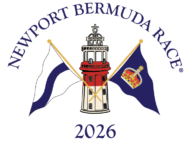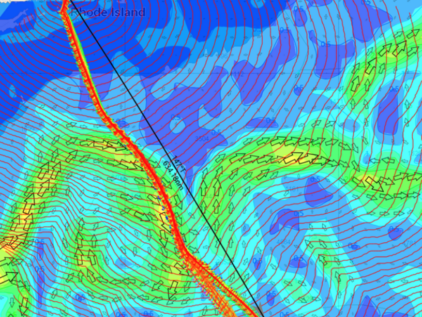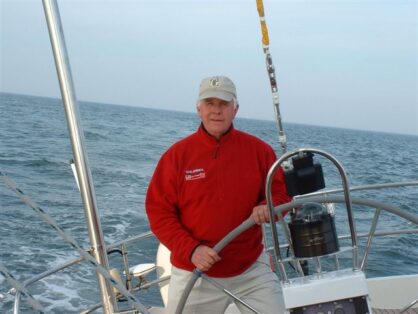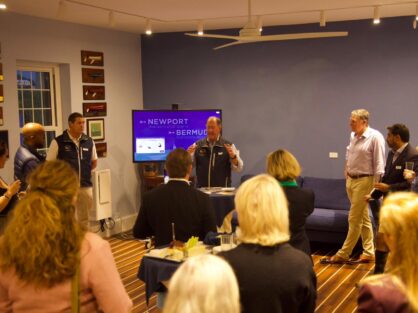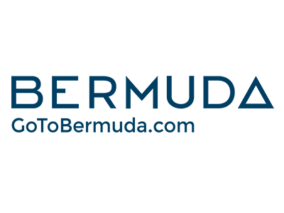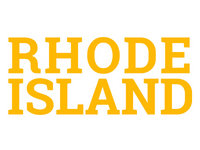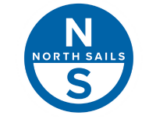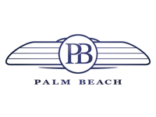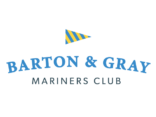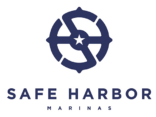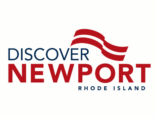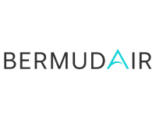Written by Jim Teeters, BROC Technical Committee
The fair scoring of sailboat races has always had its challenges. Historically some rules have encouraged certain design types and been biased against others. However, even the use of a totally accurate handicap rule that can predict a boat’s performance in any and all weather conditions, such as the ORR VPP strives to be, does not guarantee totally fair scoring. A race authority typically chooses a handicap solution that has embedded in it assumptions on what the wind speed and direction would be. If the actual weather does not match those assumptions—a common occurrence—then the handicaps are not appropriate for the race and the scoring is therefore biased.
There does exist a vision of what the perfect system would be—a Holy Grail of scoring yacht races that incorporates the following elements:
- reasonably accurate predictions of boat speed for all design types in all combinations of wind speed, wind angle, and sea state,
- handicaps that are calculated for every race using the weather conditions that actually exist on the course for all boats at all times,
- handicaps delivered to the fleet in advance of the race so competitors know how much time they owe each other which permits tactical racing,
- a simple scoring formula that is easily understood.
CCA members such as Stan Honey, Alan Andrew, and the author have been actively pursuing that Holy Grail, and the 2024 Newport Bermuda Race sought to test the idea with a new scoring system— the F-TCF.
Pre-race scoring with GRIB forecasts and optimal routing such as F-TCF.
The F-TCF addresses the need for pre-race handicaps. The approach uses the latest possible wind predictions before the start of the race. Optimal routing occurs using Expedition routing software and the fastest elapsed times are then compared to that of a scratch boat. The ratio provides a Time Correction Factor (TCF) to be used for time on time scoring.
F-TCF was used for the 2024 Newport Bermuda Race—the first official use of F-TCF scoring. Boat speed polars, suitable for Expedition, were generated in advance of the race. The latest wind and Gulf Stream files were downloaded the morning of the race. Optimal routing for each boat was then run with elapsed times used to generate the TCFs. Those were delivered a few hours before the first start.
In hindsight the use of F-TCF was a very fortuitous decision by the Bermuda Race Organizing Committee. Figure 1 shows the optimal routes for perhaps half of the fleet. The figure shows a very strong favorable Gulf Stream meander just west of the rhumb line according to the weather routing technology. The slower boats in the fleet were helped more by this favorable current.
The previous NBR scoring method, using a statistical wind table, has no knowledge of Gulf Stream currents and, if used, would have greatly favored the slow boats. However, F-TCF used a GRIB file of the Gulf Stream as part of the Expedition optimal routing, so that favorable current was correctly factored into the TCF ratings.
Figure 1. 2024 NBR sample optimal routes.
Figure 2 illustrates the results of using F-TCF compared to using PCS (Performance Curve Scoring). The PCS approach used a statistical model of wind speed and direction. It also uses the predicted wind and boat speeds for each boat that best represents what each boat experienced.
However, it does not factor in the presence of the Gulf Stream. Figure 2 shows the corrected times for the entire St. David’s division, the largest division in the race. If PCS had been used, it is obvious that the slower boats would have crushed the fastest ones by close to 10 hours of corrected time. The red dashed trend line is a simple representation of this.
In contrast, the F-TCF corrected times, blue squares and blue dashed trend line, show how this scoring method leveled the field. The trend line is horizontal, the best of the fastest boats had corrected times close to those of the best of the slowest ones.
Figure 2. Comparison of F-TCF with PCS, St. David’s division.
The same beneficial result of using F-TCF is seen in all the other divisions as well. Figure 3 shows this for the Gibbs Hill division, those boats that had unrestricted numbers of professional sailors on board.
The method was relatively easy to implement. Expedition ran all the boats in less than an hour. F-TCF ratings were then sent via spreadsheet to the scoring program, in this case Nautical Cloud, and distributed to the fleet.
The competitors knew their ratings before the race, the ratings were sensitive to the wind and current patterns on the course during the race. And, the results showed that F-TCF did a magnificent job at providing fair scoring.
Figure 3. Comparison of F-TCF with PCS, Gibb’s Hill division.
